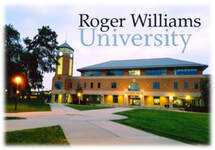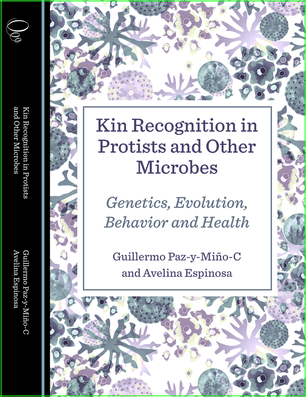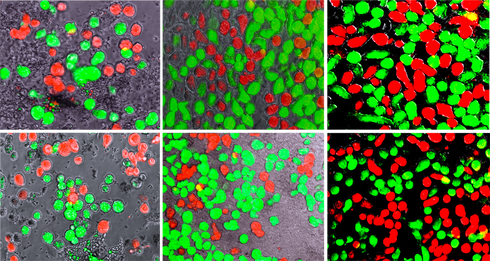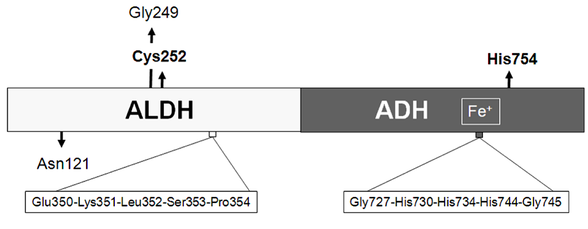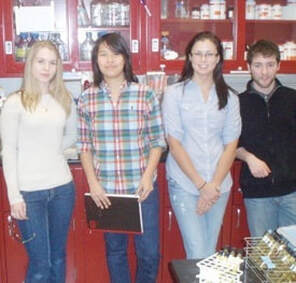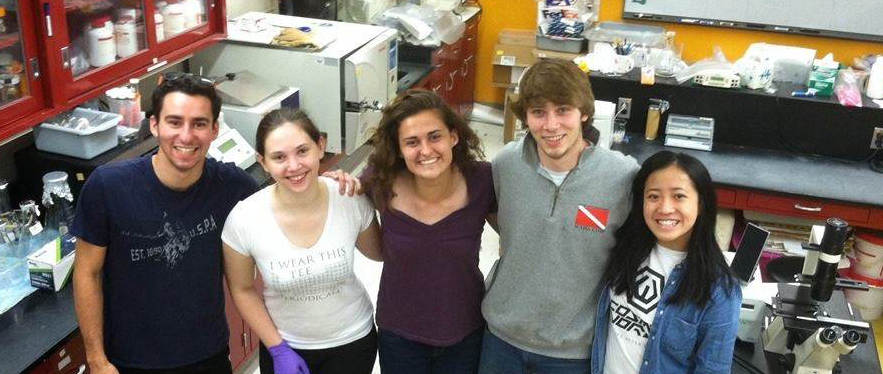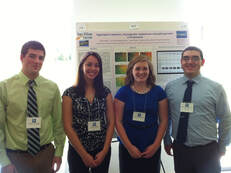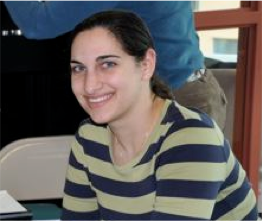Molecular Microbiology
|
FROM COVER Journal of Eukaryotic Microbiology March-April 2012: Espinosa A. & Paz-y-Miño-C, G. JEUK MIC. Discrimination, Crypticity, and Incipient Taxa in Entamoeba. Vol 59:105–110. PDF
Espinosa is author of 50 publications including peer-reviewed papers, book chapters, popular articles and the book Measuring the Evolution Controversy at American Colleges and Universities (a Best Seller at Cambridge Scholars) and Kin Recognition in Protists and Other Microbes: Genetics, Evolution, Behavior and Health. As co-Director of New England Center for the Public Understanding of Science (NESP) at RWU, she works with various audiences to advance scientific literacy and highlight the relevance of science in society.
|
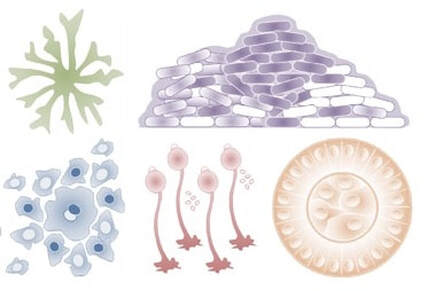
2021 NEW BOOK CHAPTER on Microbial Cell Communication
Book Chapter Paz-y-Miño-C, G. Espinosa, A., 2021. The Many Shapes of Microbial Detection of Kin and Kind. Pp. 79-99. In: G. Chapouthier & MC Maurel (Eds.) The Explosion of Life Forms: Living Beings and Morphology. Wiley-ISTE, London, UK. ISBN (10): 1789450055, ISBN (13): 978-1789450057.
Chapter 6. The Many Shapes of Microbial Detection of Kin and Kind by Guillermo PAZ-Y-MIÑO-C and Avelina ESPINOSA – Bacteria, archaea and protists are anatomically/functionally equipped to detect close genetic relatives, as well as distantly related conspecifics. In this chapter, the authors discuss the adaptive value of a microbe’s ability to discriminate/recognize kin from non-kin. Because the theoretical framework of this field was initially developed for animals – and some plants, they first explain its foundations and later examine unicells’ examples. Emphasis is on “shapes” and genetics. The authors highlight the relevance of kin detection for altruistic cooperation (including among pathogens) or for the identification of “cheater cells” (the beneficiaries of others’ selfless acts, but that do not contribute to the collective well-being), and for the formation of temporary or permanent cell alliances, which are informative for understanding the evolutionary origins of multicellularity.
Book Chapter Paz-y-Miño-C, G. Espinosa, A., 2021. The Many Shapes of Microbial Detection of Kin and Kind. Pp. 79-99. In: G. Chapouthier & MC Maurel (Eds.) The Explosion of Life Forms: Living Beings and Morphology. Wiley-ISTE, London, UK. ISBN (10): 1789450055, ISBN (13): 978-1789450057.
Chapter 6. The Many Shapes of Microbial Detection of Kin and Kind by Guillermo PAZ-Y-MIÑO-C and Avelina ESPINOSA – Bacteria, archaea and protists are anatomically/functionally equipped to detect close genetic relatives, as well as distantly related conspecifics. In this chapter, the authors discuss the adaptive value of a microbe’s ability to discriminate/recognize kin from non-kin. Because the theoretical framework of this field was initially developed for animals – and some plants, they first explain its foundations and later examine unicells’ examples. Emphasis is on “shapes” and genetics. The authors highlight the relevance of kin detection for altruistic cooperation (including among pathogens) or for the identification of “cheater cells” (the beneficiaries of others’ selfless acts, but that do not contribute to the collective well-being), and for the formation of temporary or permanent cell alliances, which are informative for understanding the evolutionary origins of multicellularity.
Biology of ADHE enzymes
|
Schematic diagram of Entamoeba histolytica alcohol dehydrogenase
2 (EhADH2). The enzymatic activities reside in two separate, interacting domains: aldehyde dehydrogenase (ALDH) and alcohol dehydrogenase (ADH) between domains (Paz-y-Mino-C & Espinosa 2010) |
Books
April 2018: Kin Recognition in Protists and Other Microbes is the first volume dedicated entirely to the genetics, evolution and behavior of cells capable of discriminating and recognizing taxa (other species), clones (other cell lines) and kin (as per gradual genetic proximity).
People
|
Left: Laura-Ashley Przondo (2011), Monichan Phay (2011), Kate Higgins (2011), Mark O'Brien (2012)
Center Up: Joshua Leitao (2016), Meagan Hackey (2017), Katie Lowerre (2017), Alex Tight (2015), Hien Ngo (2015)
Center Low: Andrew Mitchell (2013), Hanna Sobon (2014). Layla Ferland (2014), Kevin Franca-Schindelwig (2014)
Right Low: Lauren Salerno (2012)
Center Up: Joshua Leitao (2016), Meagan Hackey (2017), Katie Lowerre (2017), Alex Tight (2015), Hien Ngo (2015)
Center Low: Andrew Mitchell (2013), Hanna Sobon (2014). Layla Ferland (2014), Kevin Franca-Schindelwig (2014)
Right Low: Lauren Salerno (2012)
Roger Wiiliams University
[email protected]
Department of Biology
Marine and Natural Sciences 236
One Old Ferry Road, Bristol RI 02809
Department of Biology
Marine and Natural Sciences 236
One Old Ferry Road, Bristol RI 02809
